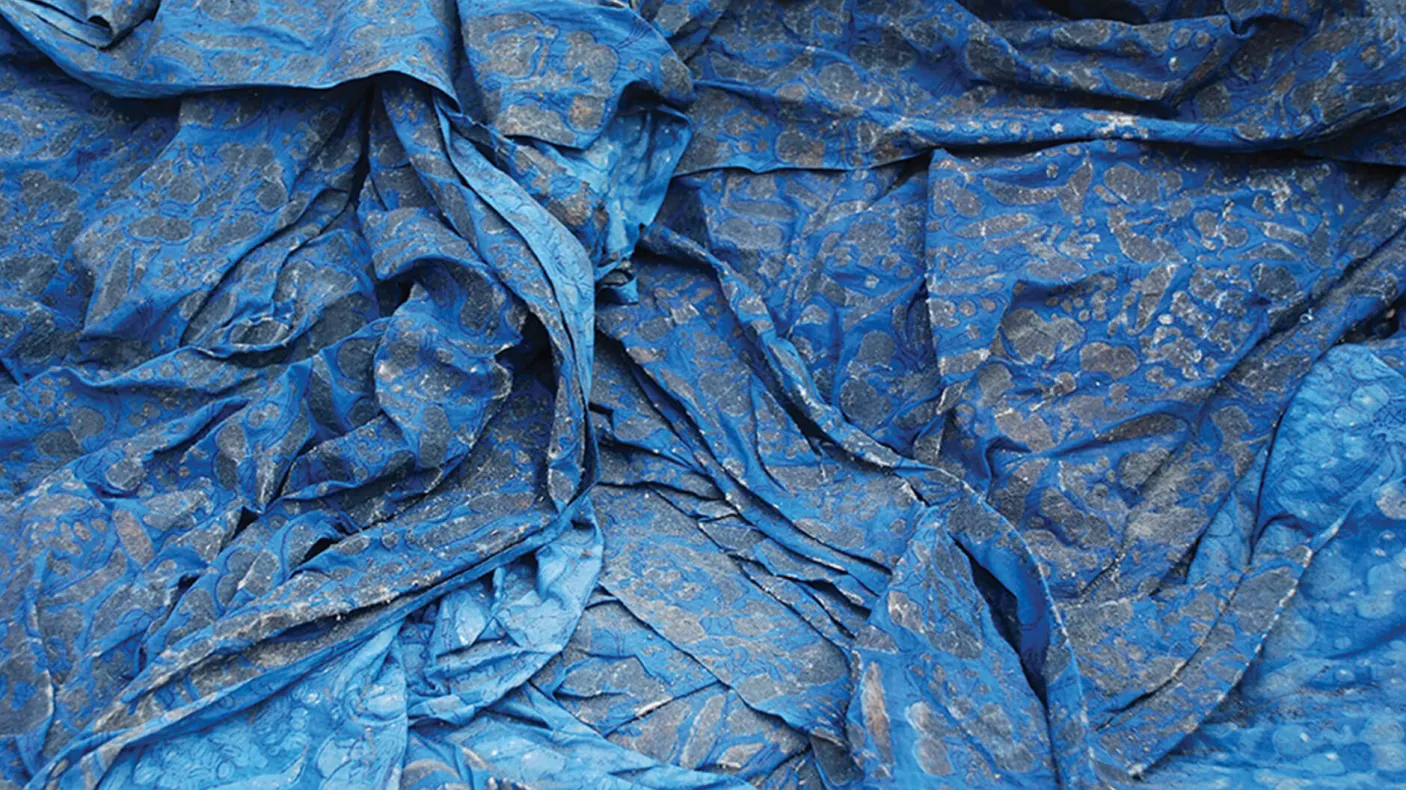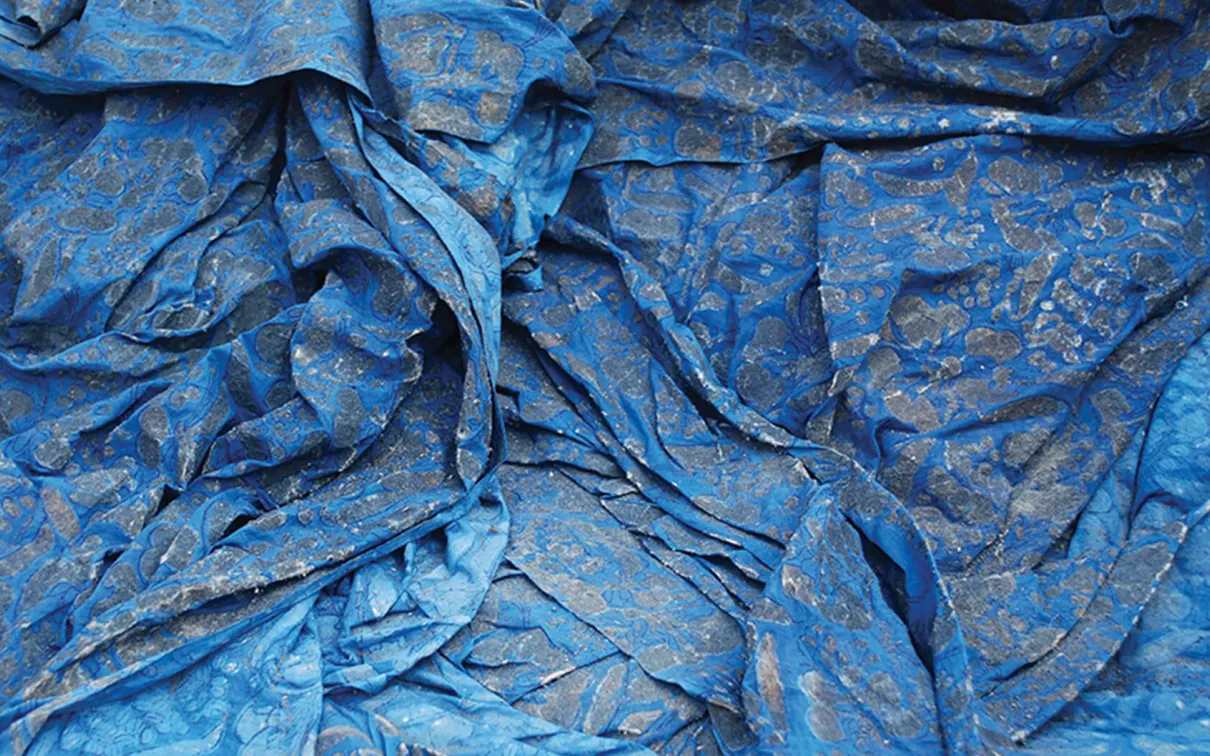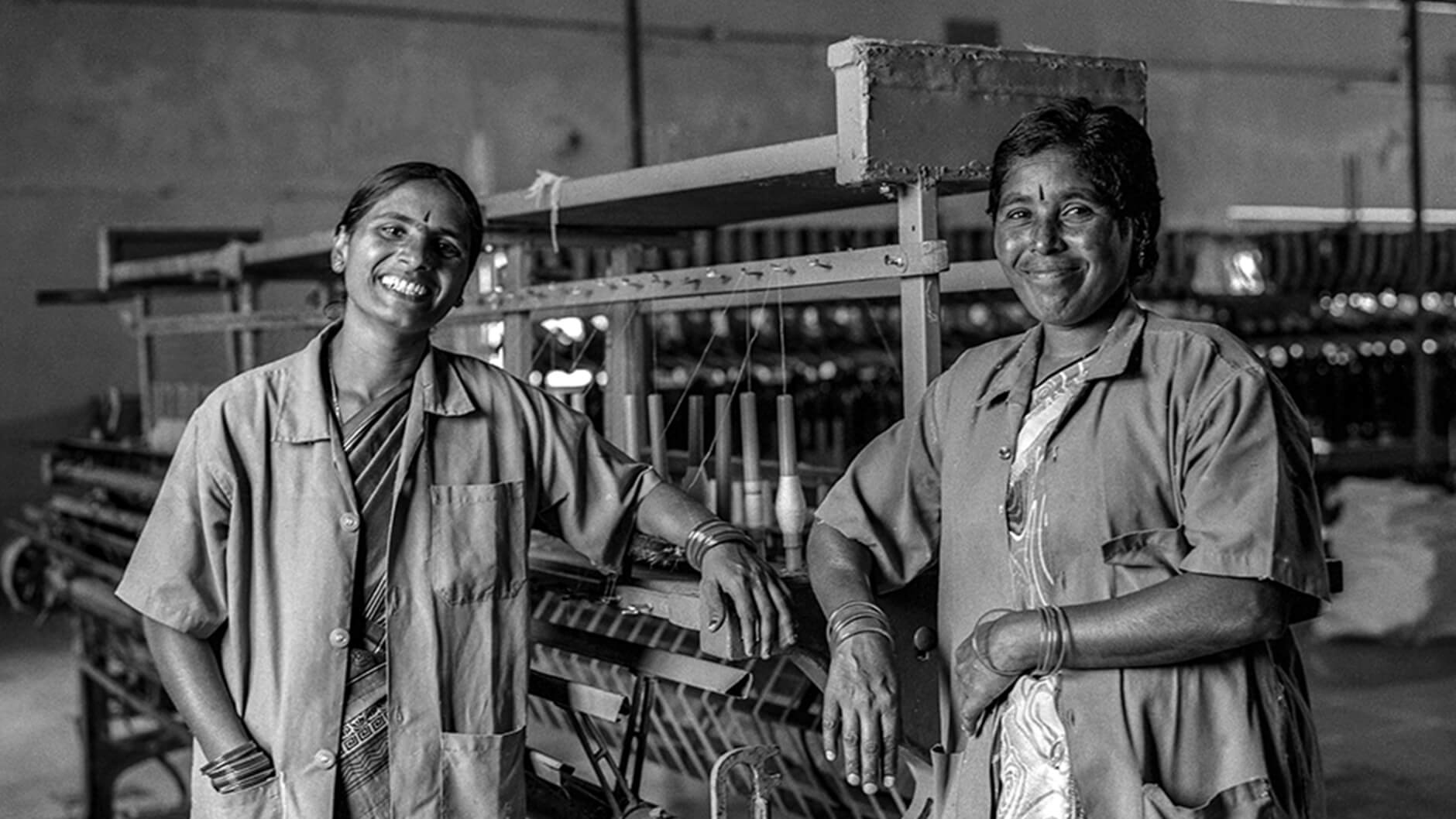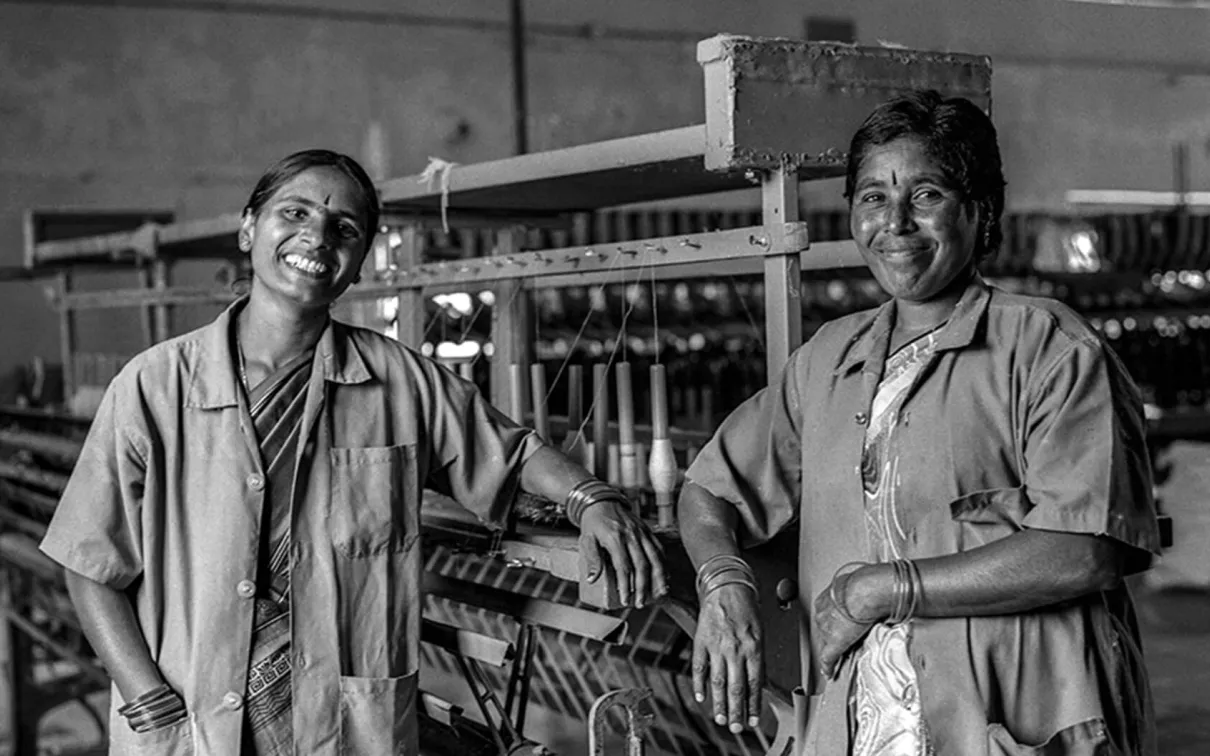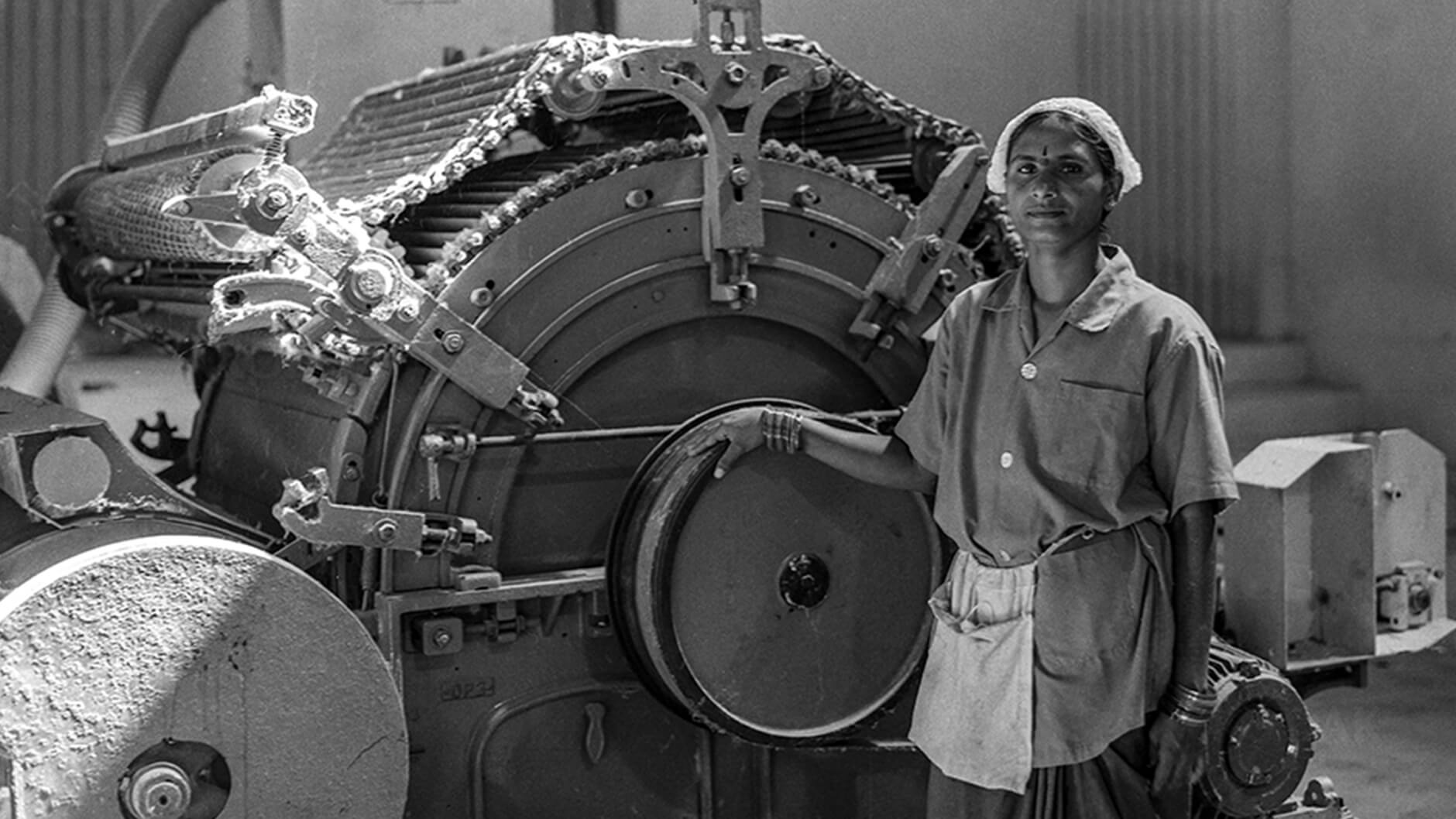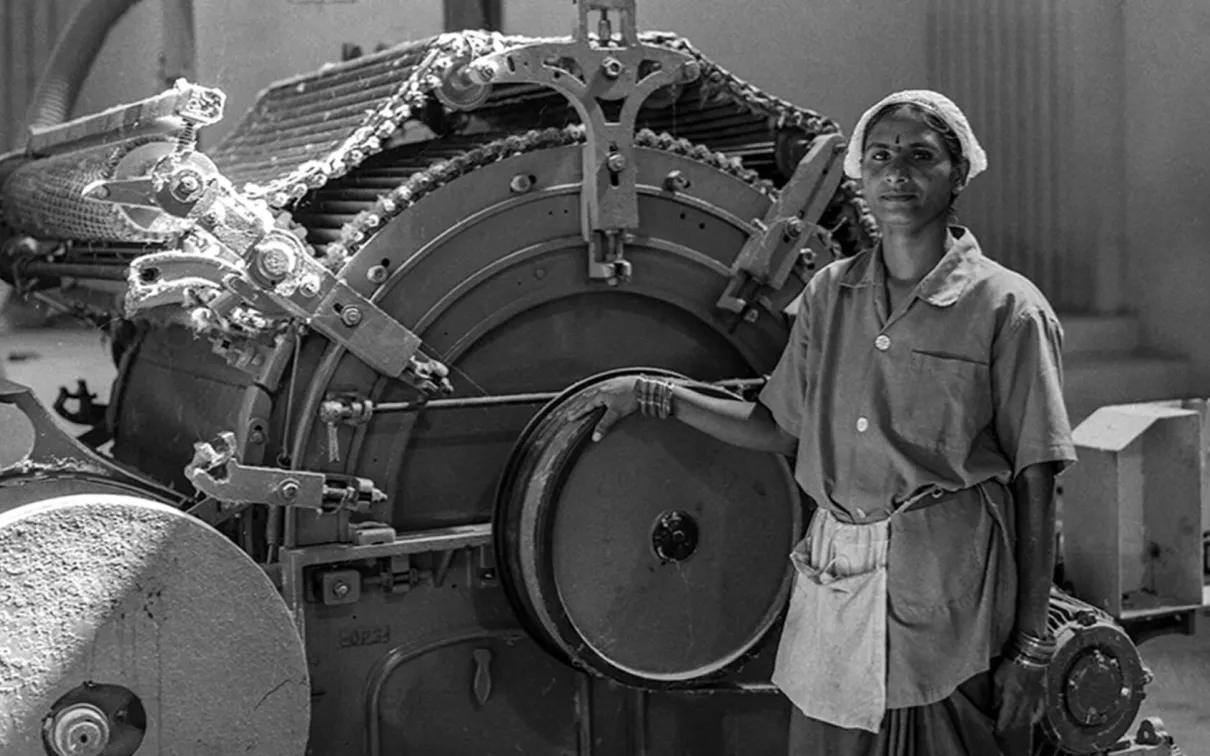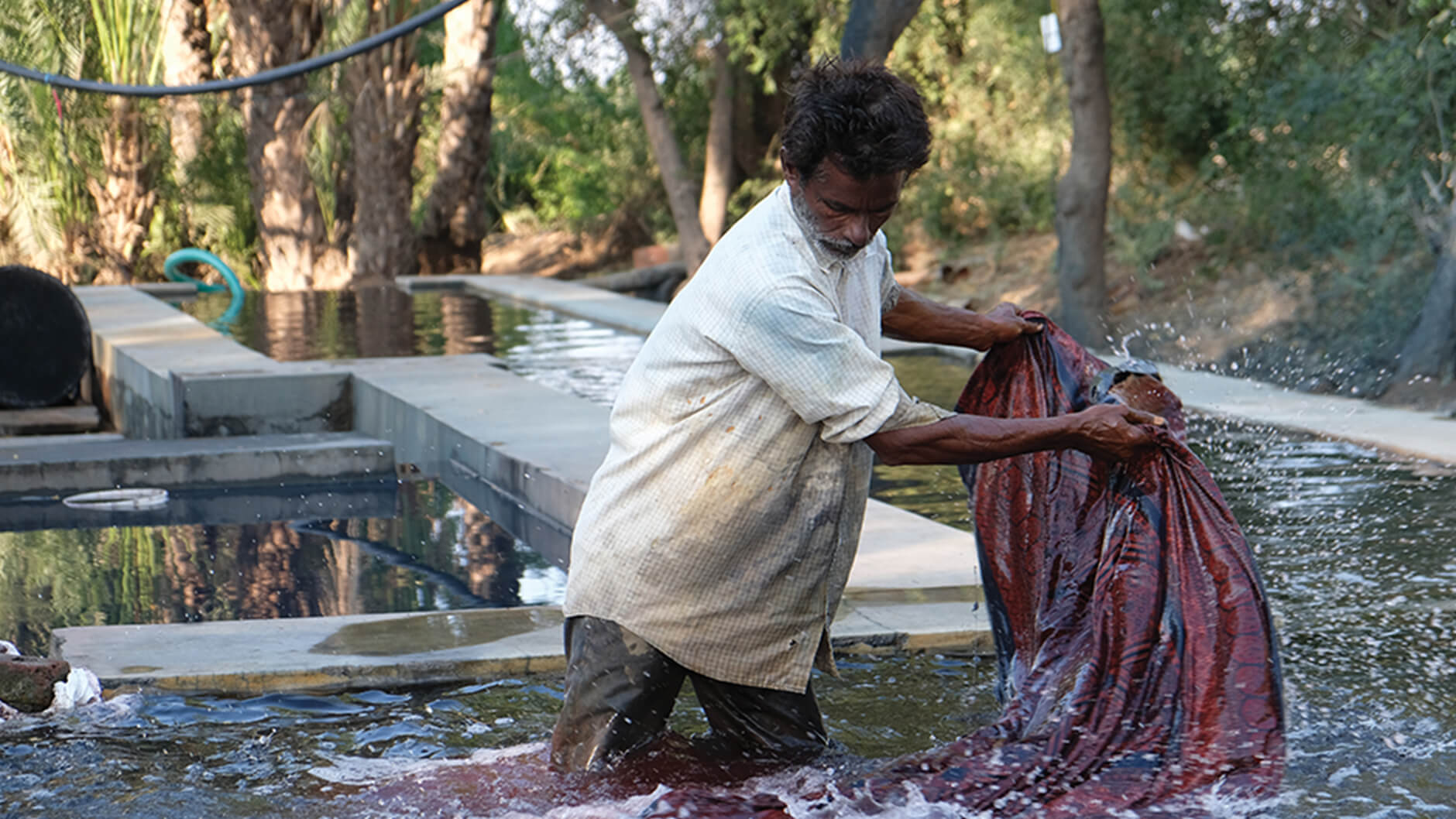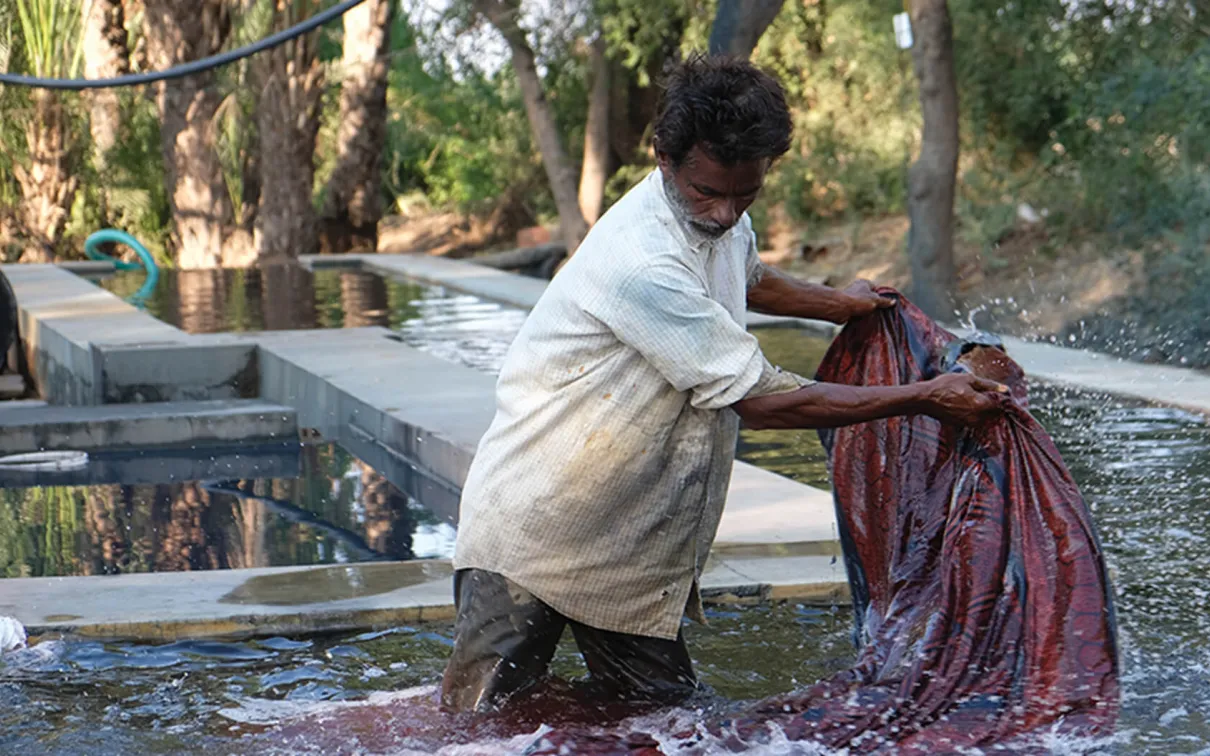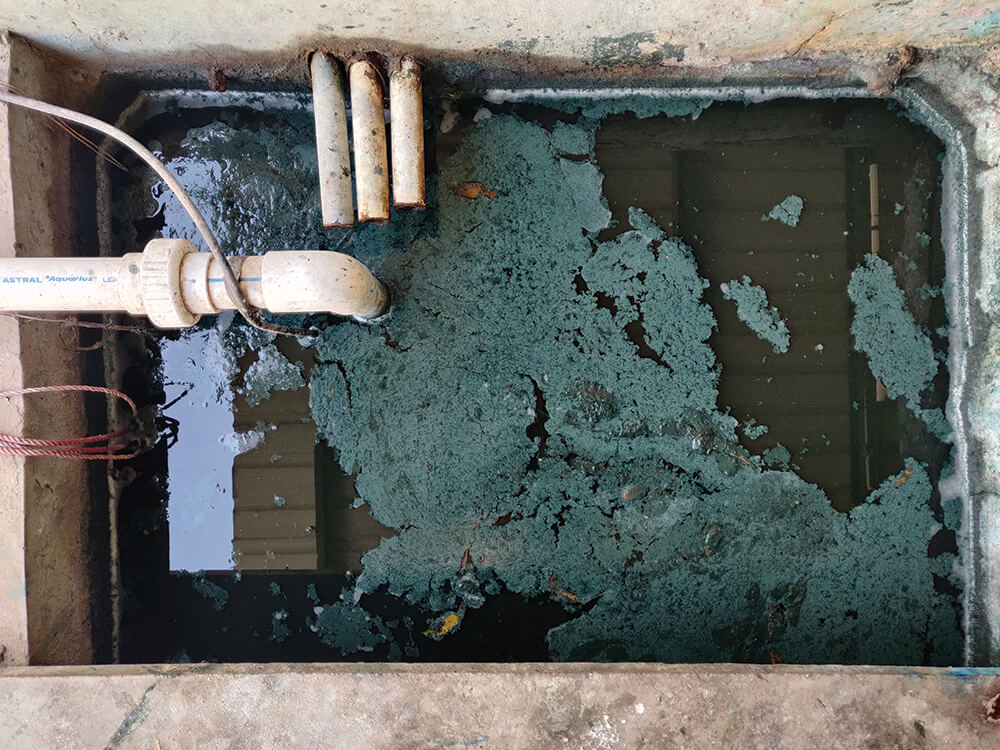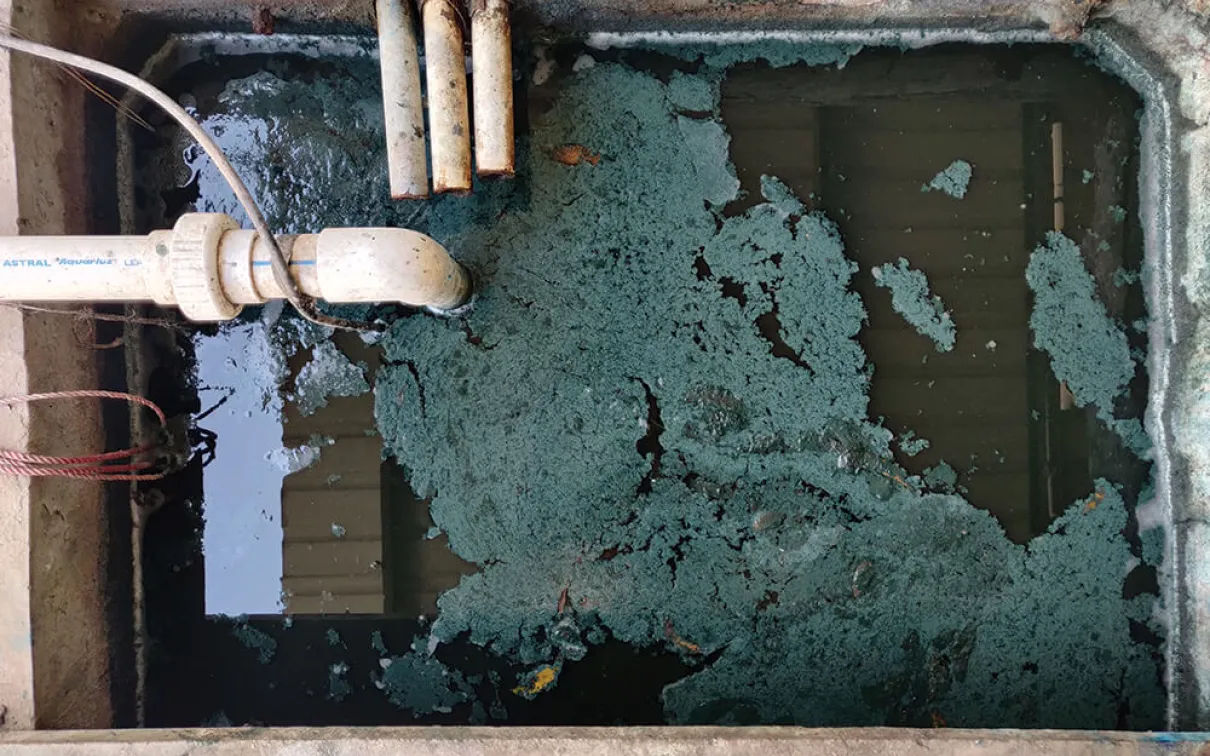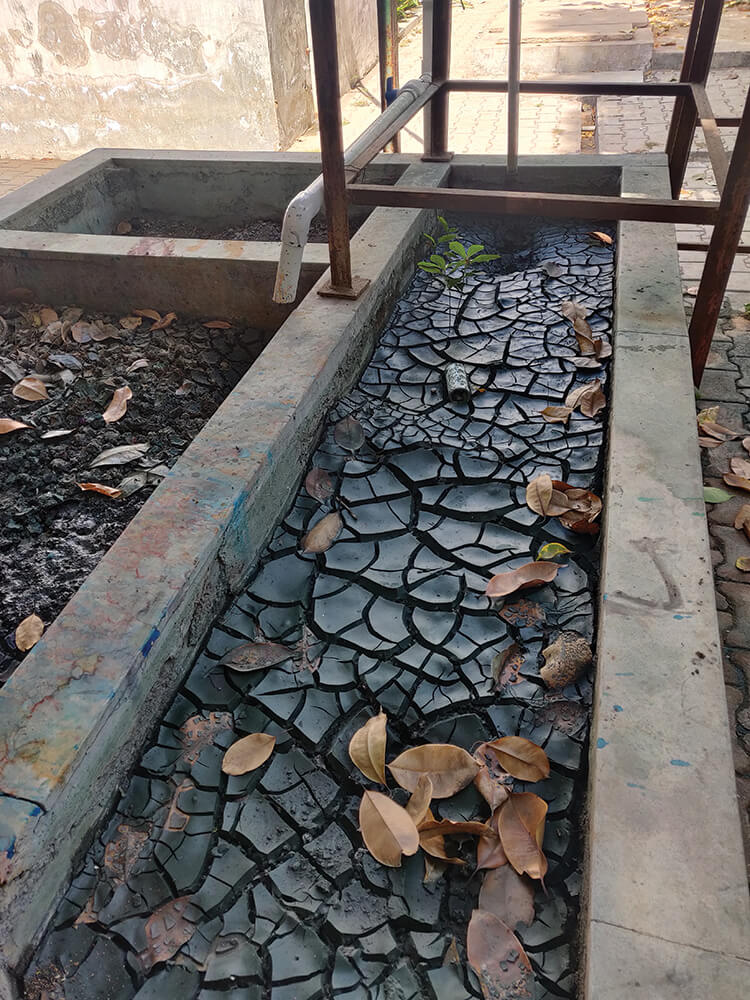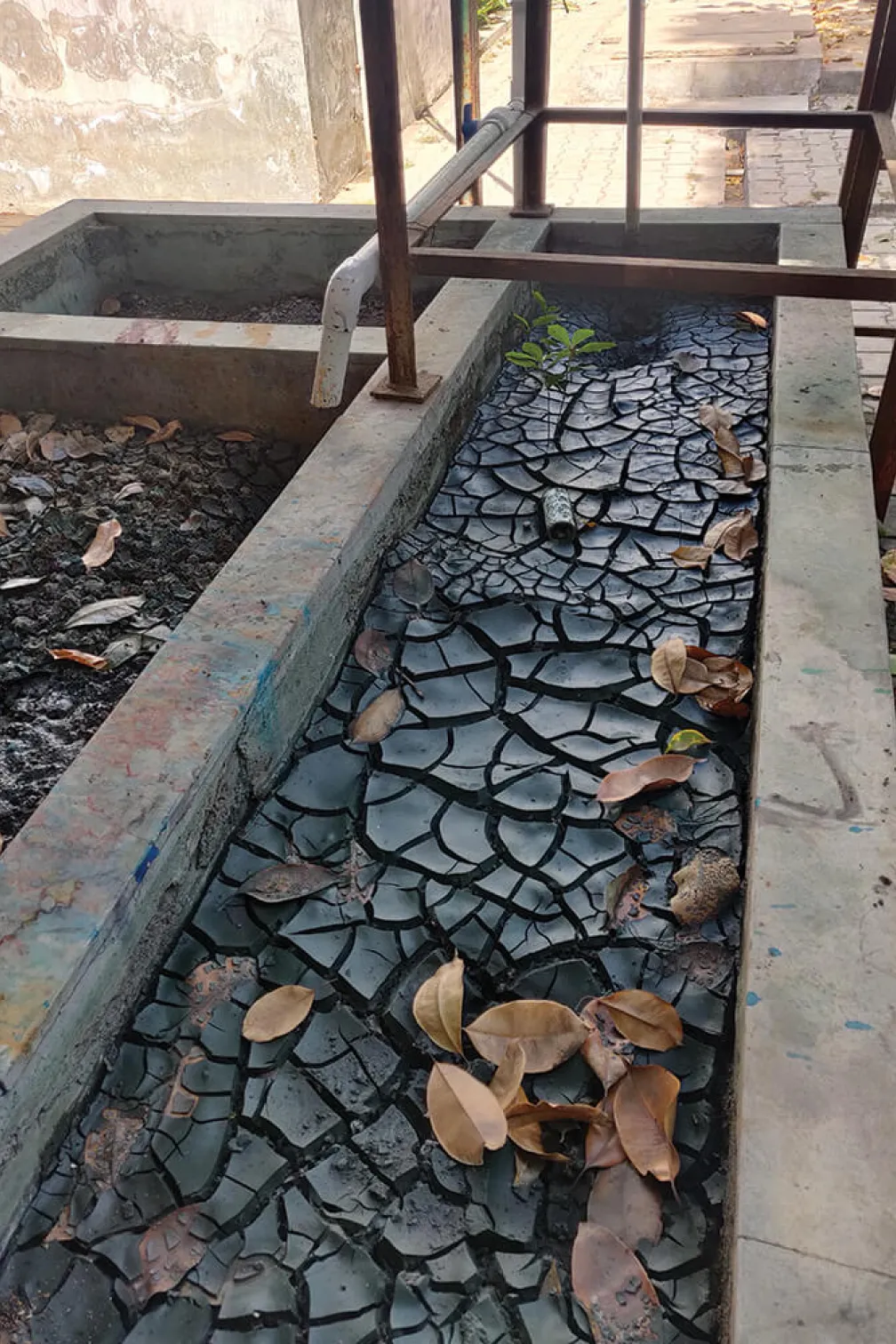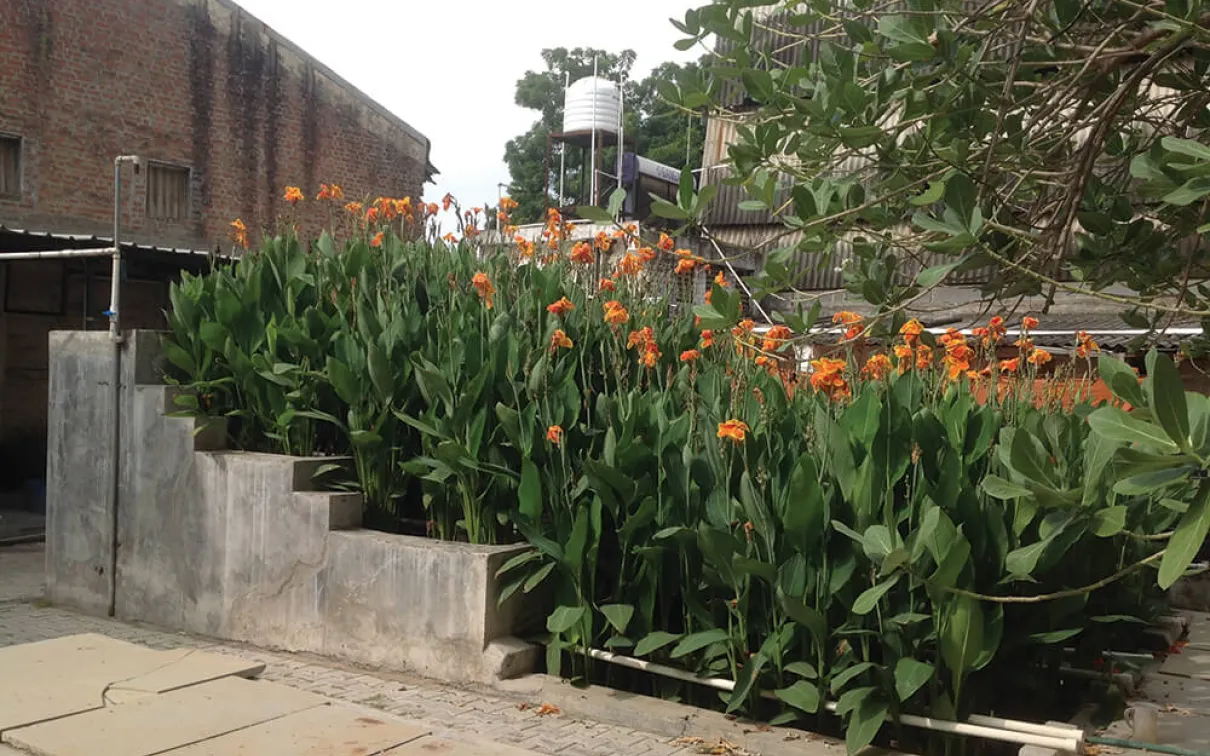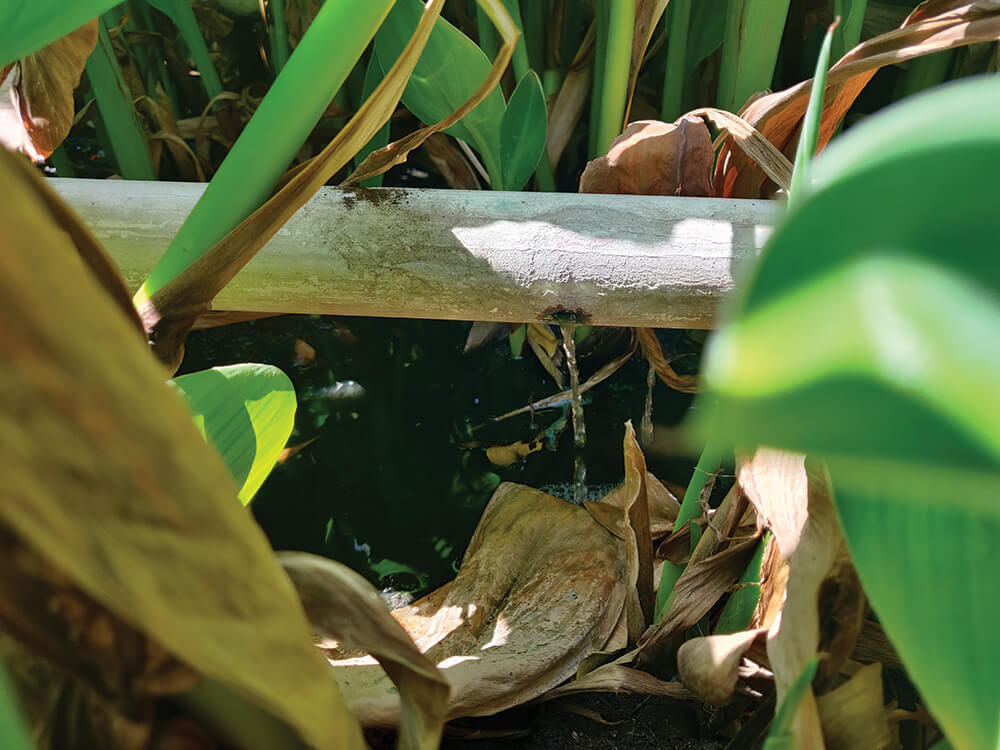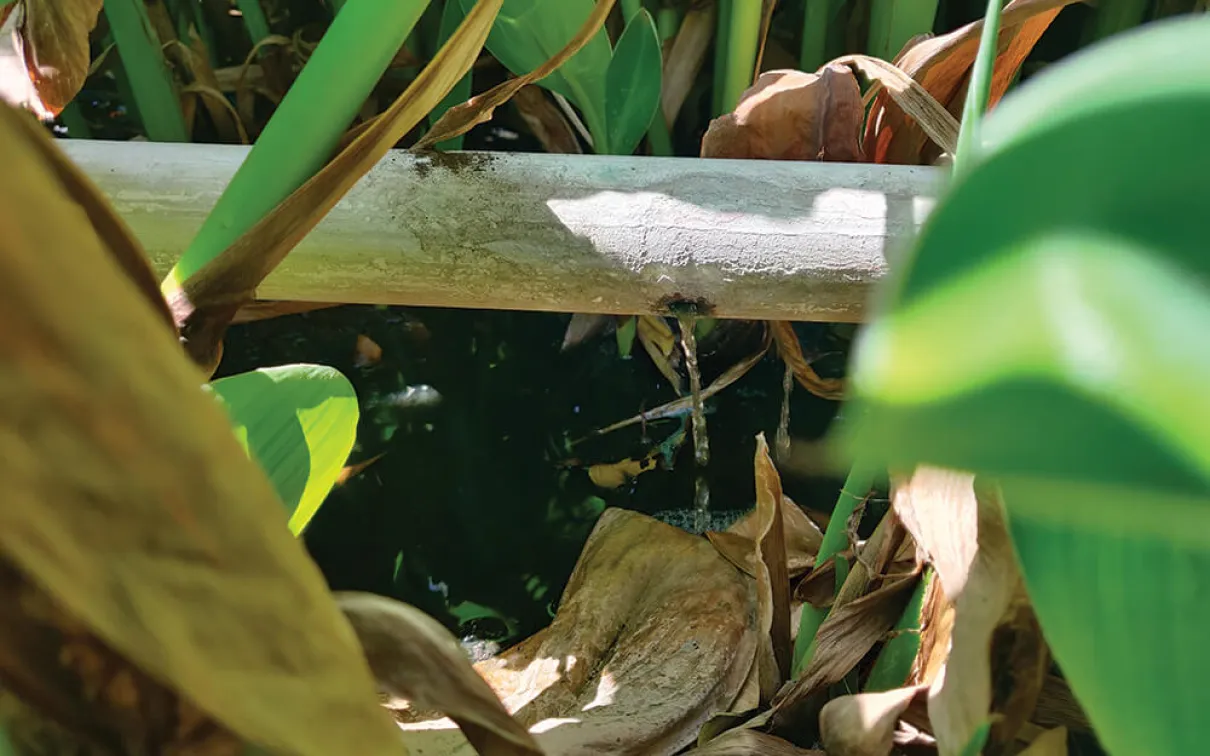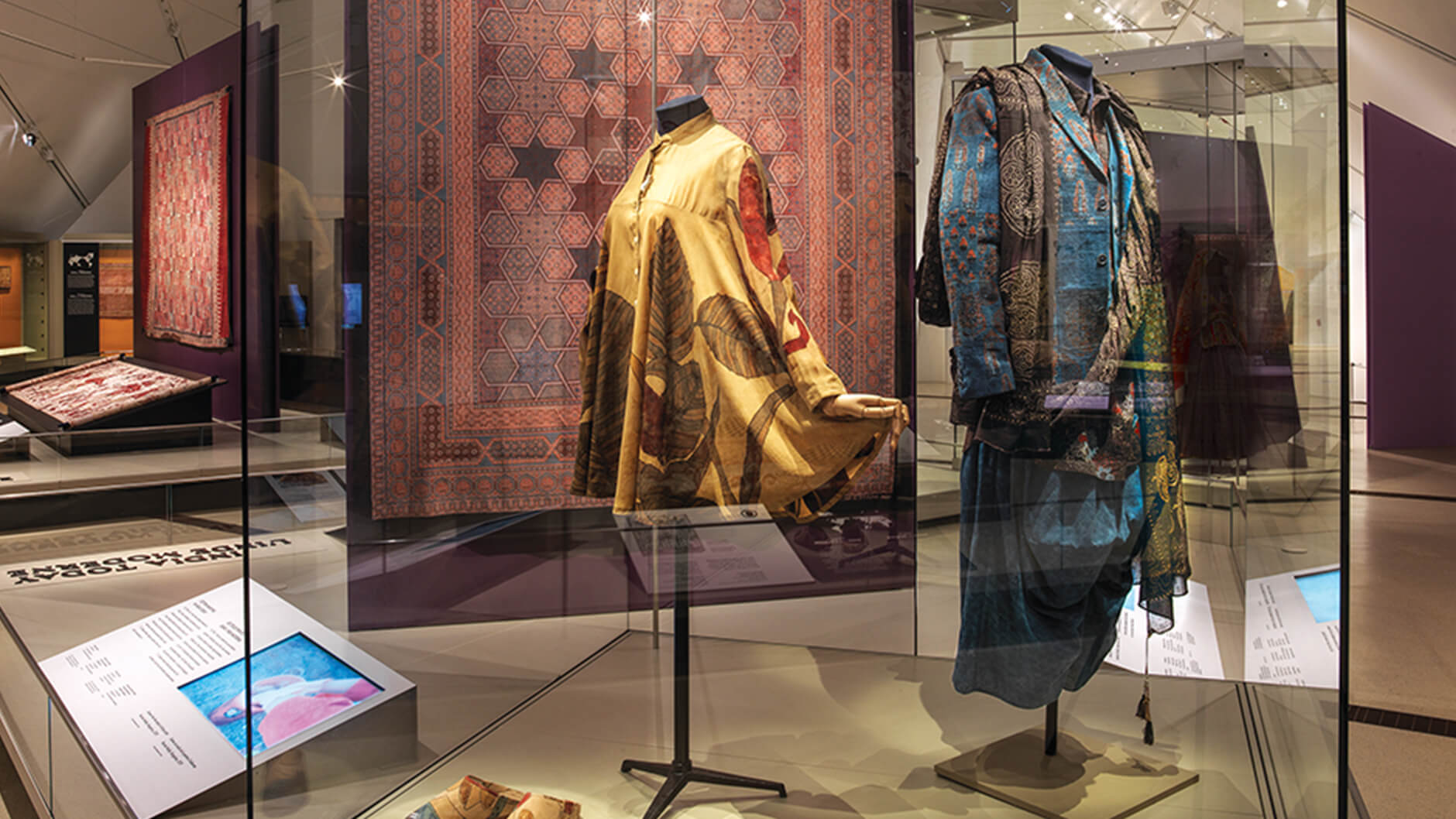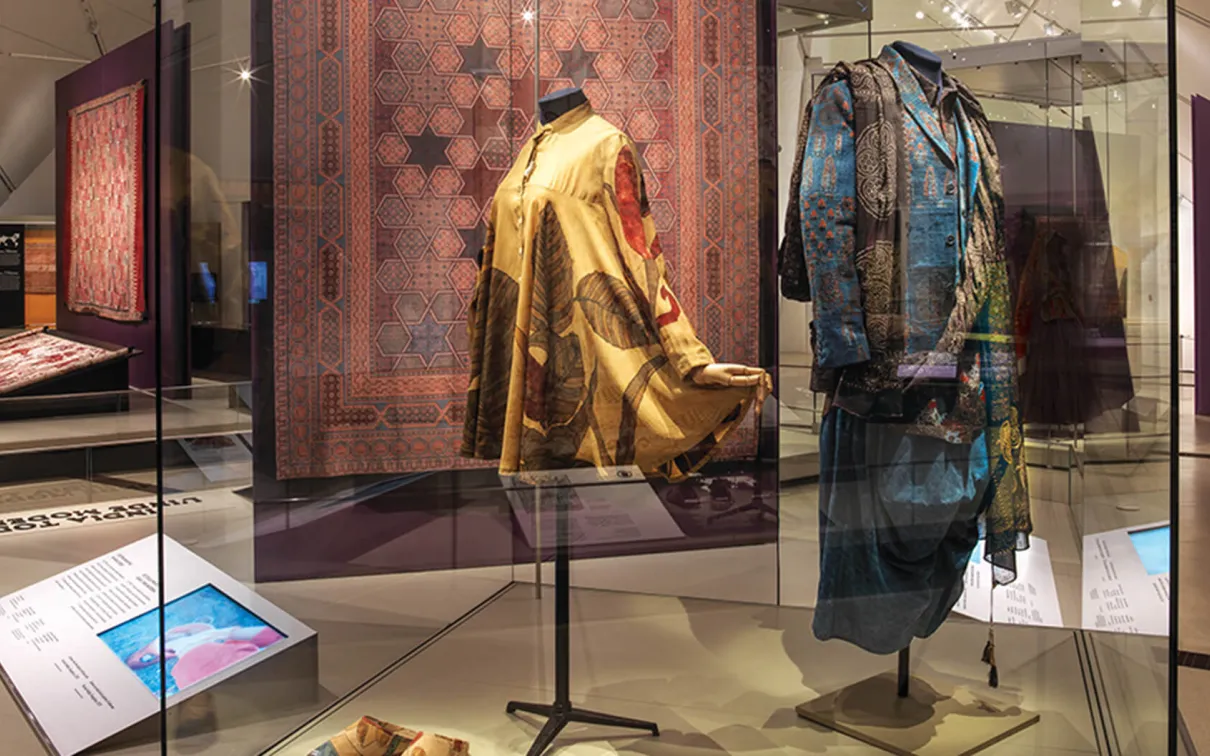Innovating Indian Chintz in the Face of Changing Environmental Conditions
The contemporary search for sustainable cotton, colour, and design.
Published
Categories
Our current exhibition The Cloth That Changed the World
Our current exhibition The Cloth That Changed the World: India’s Painted and Printed Cottons explores and celebrates handcrafted textiles made of cotton and natural dyes, known as “chintz.” Any thoughts of environmental damage or climate change may, at first blush, seem far away. In reality, small-scale farmers and craftspeople in India today face the same escalating challenges in making colourful cotton cloth as do industrial mills and manufacturers, precipitated by changing environmental conditions and an increased global demand for their goods. As a result, artisans and designers are compelled to be creative and develop innovative methods that promote sustainable cotton, colour, and design.
The Cloth That Changed the World introduces visitors to pressing issues facing the textile industry and the world at large, and invites us all to reflect on our power as consumers. As it has in the past, the worldwide desire for coloured cotton cloth and garments is shaping our human relationships—and human–environment relationships—in multiple and complex ways. It is becoming impossible to ignore the fact that our consumption of clothing, often dictated by waxing and waning seasonal trends, has a major impact on our interconnected planet, forcing us to think carefully about our lifestyle choices.
The consequences of contemporary consumer desire
Over the past 20 years, the world has fallen in love with “fast fashion:” apparel produced rapidly to keep pace with ever-changing fashion trends and sell at low prices. Made of thin fabrics quickly sewn for low wages, these garments are usually worn only once or twice before being thrown away. North Americans today buy twice as many garments as they did 15 years ago and keep them half as long. Roughly 100 billion new garments are now produced every year; 87 percent of garments are ultimately incinerated or end up in landfill.
In recent years, newsfeeds and social media have widely shared scientific studies that lay bare the environmental damage caused by this overproduction and overconsumption—namely, toxicity and waste. Modern textile and garment making ranks among the world’s most polluting and water-consuming industries. It famously requires 2,700 litres of water to grow the cotton for a single T-shirt. Contributing to the pollution stream is the modern washing machine, which releases enormous loads of harmful particles. Microfibres from synthetic polyester garments have recently been found in alarming quantities deep in Arctic waters and ocean sediments, disrupting the food web. As a natural fibre, cotton may seem to be a benign alternative, but today’s industrial mills treat and dye it with harmful chemicals. The production of blue jeans in particular—over five billion annually—and their subsequent washing release toxic synthetic dyes and cotton microfibres into world waters, at both their source of manufacture in Asia and their consumer destinations in North America, from the temperate to Arctic regions, according to a study published in 2020 by Samantha N. Athey et al. at the University of Toronto.
One type of “slow fashion,” in the form of handcrafted textiles and garments, is less harmful but not benign. Even the small-scale production of coloured cottons can consume much water and damage ecosystems. Which raises the question: how are farmers and craftspeople, who for millennia have produced India’s unique printed cottons, confronting these problems, especially as global demand for their goods rises and water supplies in India change and shrink?
Sustainable cotton
For thousands of years, consumers the globe over have loved the feel and washability of cotton. Yet growing cotton today relies heavily on irrigation and pesticides.
In 2017, after a 200-year hiatus, India regained its position as the world’s largest grower of cotton, and is now home to nearly 10 million cotton farmers. But rather than India’s own cotton species (Gossypium arboreum), domesticated 5,000 years ago, the majority of India’s cotton crop today is an introduced American species (Gossypium hirsutum) that has been genetically modified to resist pests. Its major advantage is its long fibres, best suited to industrial machinery. But its seeds are expensive, and it requires harmful fertilizers and pesticides, which some studies link to the impoverishment of small-scale farmers. Once the ripe cotton is picked, it is compressed for shipping to distant factories where it is chemically treated and machine spun in enormous mills.
For 20 years, Indian scientists and non-governmental organizations (NGOs) have worked to re-introduce native Indian cotton species and varieties, which are adapted to local environments and largely rain fed. These native species facilitate organic cotton growing methods that use fewer pesticides and fertilizers. The NGO Khamir in the state of Gujarat has re-introduced the local cotton variety kala, well adapted to the Kutch region’s arid conditions. In the state of Andhra Pradesh, the non-profit group Malkha is likewise working to re-introduce local cotton varieties. Above all, Malkha seeks to once again make cotton yarn spinning a sustainable rural activity that provides a living wage. Directly connecting cotton farmers to local, semi-mechanized spinners also contributes to a better cloth: cotton that is neither compressed nor chemically treated makes superior yarn and fabrics that better absorb natural dyes, according to Malkha’s experience.
Sustainable colour
Cotton’s ability to take bright colour accounts for much of its appeal. The invention of synthetic dyes, beginning in the 1850s, reduced the time and cost of creating colour and greatly expanded the available palette. But used on an industrial scale in increasing quantities, synthetic dyes and additives consume enormous quantities of water, and the wastewater released is a literal river of toxic chemicals, impacting aquatic life and drinking water. An estimated 20 percent of industrial water pollution comes from fabric dyeing and treatment. Some classes of synthetic dyes contain known carcinogens. For example, the preparation and use of synthetic indigo blue dyes—our denim jeans again!—require large amounts of formaldehyde, which is released back into the environment during repeated rinsing and run off.
Yet dyeing with natural plant dyes, including India’s own native indigo plant (Indigofera tinctoria), also requires large amounts of water. Bleaching cloth to produce brilliant whites—a hallmark of some Indian chintz traditions, and the ground colour preferred in the West—can take over 100 washings. This is why India’s cotton printing workshops have always been located near rivers and ponds. Indeed, the special qualities of India’s waters contributed greatly to its unparalleled, vibrant fabric colours. But the metallic salts (mordants) used with dye plants to make vibrant reds and blacks can be harmful in large quantities. Furthermore, water supplies are running notoriously low in India, linked in part to increased use of groundwater by growing cities, industry, and agriculture, and in part to weakening monsoon rains associated with climate change. In many parts of our planet, such water shortages loom as a major humanitarian crisis.
In response to changing water supplies, India’s small-scale cotton printing workshops are innovating. Here are two examples that Eiluned Edwards, professor of Global Cultures of Textiles and Dress at Nottingham Trent University, chronicles in Imprints of Culture.
For centuries, the Khatri cotton-printing families of the arid Kutch region relied on the Saran River to wash their cloth. But in the 1980s, the river dried up. The printers turned to well water and washing tanks, and developed a filtration system using sand and gravel to remediate the heavy iron content of the well water. But with lowering groundwater, today’s wells reach depths of over 400 feet, and the water is salty.
The Khatris now collect rainwater, are innovating water-efficient printing techniques, and are working with state agencies on a common effluent treatment plant in an effort to remove excess iron and recycle water.
In the Gujarati city of Vadodara, the textile printing studio Bodhi uses eco-friendly chemical dyes that require less water. Bodhi’s founders, Mala and Pradeep Sinha, have worked since 2000 to develop efficient washing methods and a water recapture system. Their studio uses only rainwater. The cloth is efficiently washed using a series of conjoined barrels. Wastewater is cleaned by a bioremedial system developed in partnership with Dr. Sandeep Joshi (Shrishti Eco-Research Institute, Pune, Maharashtra), which uses canna plants and sand filters; the plant roots remove the heavy metals, allowing the purified water to be safely re-used. Other small printing studios, such as Brigitte Singh in neighbouring Rajasthan, are adopting this system.
Gallery 1
The four steps in Bodhi’s bioremedial water recapture
- Wastewater pH levels are neutralized by adding alum or lime.
- Overnight, the dye sludge will settle to the bottom.
- Wastewater passes three times through a stepped filter of sand and gravel.
- The root systems of canna lilies further bioremediate the wastewater. Treated water can be re-used for textile printing, or in the garden.
Photos courtesy of Mala Sinha, Bodhi Studio, Vadodara, Gujarat.
Sustainable design
In India, as around the world, growing numbers of fashion designers and labels are embracing slow fashion and promoting more environmentally friendly textile and garment making. Mumbai’s Lakmé Fashion Week has devoted two days to the promotion of sustainable fashion since 2015 and established the Circular Design Challenge in 2019 in partnership with the United Nations Environment Programme.
One element of sustainable design is minimizing cutting and scraps. Some fashion designers thus continue to promote the sari, the quintessential waste-free garment. Others, such as Aneeth Arora of Péro, recycle scraps into accessories. Another dimension of sustainable design, according to Charllotte Kwon, founder of the Vancouver-based Maiwa Handprints, is working responsibly with cotton printing families over the long term. Too often, external designers commission new patterns and colours for a single season, causing printers to master new techniques and carve new printing blocks that are soon discarded.
The ROM exhibition features two Indian fashion lines committed to sustainable chintz made with natural dyes. From the Spring 2019 “Sindhu” collection of the luxury lifestyle company Good Earth comes a menswear ensemble—a tailored suit jacket accessorized with numerous uncut wrappers of full textile lengths—that is block printed in natural dyes by Junaid Ismail Khatri. The fashion label 11.11/ eleven eleven is committed to using handwoven cloth (khadi), natural dyes, local hand skills, and the recycling of all scraps—even loose threads. Its Seed to Stitch line allows consumers to trace the full supply chain and encodes the names of each individual artisan involved in a garment’s creation: spinner, dyer, embroiderer, stitcher.
What you can do
The environmental and human costs of fast fashion made the headlines again when production in Asia ground to a halt in spring 2020 as a result of COVID-19. The pause revealed the plight of poorly paid textile workers, and how air and water quality vastly improved with factory closures. For the post-COVID era, numerous individuals, groups, companies, and governments are now planning for a “green recovery.”
As consumers, there are ways we can contribute to this effort. We can focus on altering our purchasing habits so that we buy less, “buy once, buy well,” which would mean investing in quality pieces that will last over time. We can buy used or repurposed clothing made of discarded fabrics and consult the social and environmental sustainability ratings for clothing labels (goodonyou.eco, sustainablefashiontoolkit.com); some guarantee their supply chains (e.g., they can tell where and how the cotton was grown, processed, and dyed and the garments were sewn). Finally, another small step that we can take is to wash clothing less often, in cooler water, and line dry whenever possible. (Jeans manufacturers recommend washing once a month.) Cotton, colour, and design can be enjoyed sustainably.
Learn More
Menon, Meena, and Uzramma. A Frayed History: The Journey of Cotton in India. New Delhi: Oxford University Press, 2017.
Edwards, Eiluned. Imprints of Culture: Block Printed Textiles of India. New Delhi: Niyogi Books, 2016.
Athey, Samantha N., et al. “The Widespread Environmental Footprint of Indigo Denim Microfibers from Blue Jeans.” Environmental Science & Technology Letter 7, no. 11 (November 2020): 840–847.
Alfred, Emily. “Zero Waste Fashion: Reusing and Recycling Textiles.” Toronto Environmental Alliance. May 25, 2017.
RiverBlu. Documentary. 2017. Available on Vimeo on Demand.
Sinha, Mala Pradeep. “Sustainability at Bodhi.” Bodhi Textile Design Studio. Posted on May 23, 2017.
Sarah Fee
Sarah Fee is Senior Curator of Global Fashion & Textiles at ROM.

